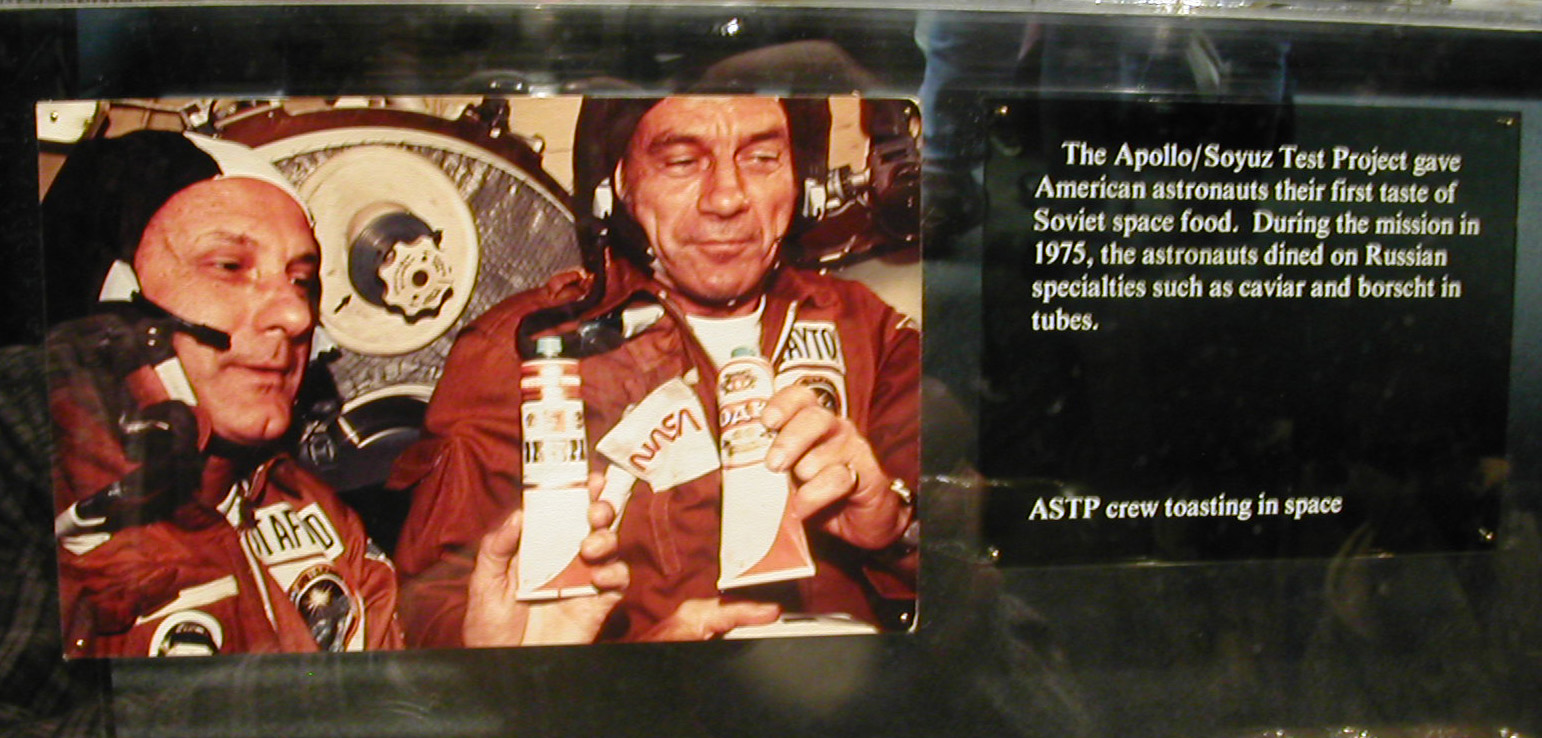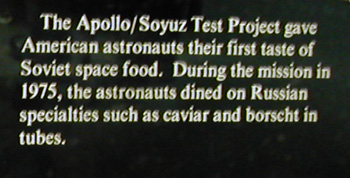We (and 90% of everyone else in the vicinity of Washington, D.C.) went to the Smithsonian National Air and Space Museum yesterday. The crowds notwithstanding, it was a pretty good time. But a close inspection of the Apollo program exhibit yielded evidence of shocking obfuscation.

Space-ready foodstuffs, as every kid can tell you, are a staple of museum displays about space programs. (They’re right up there with the useful post-prandial capacities of old-timey space suits.) So naturally, the food-in-tubes would be part of the display for the Apollo/Soyuz Test Project exhibit. As you’ll recall, in 1975, the Apollo capsule and the Soyuz capsule docked in space, allowing for the mingling of American and Soviet crews for a couple days of experiments, photo-ops, and hanging out.

Some of that hanging out, naturally, involved chowing down on space food. The text in the Air and Space exhibit plays up the element of sharing cuisine as a means to establish understanding of people from other cultures, noting that the Apollo astronauts got to partake of food-tubes containing traditional Soviet delicacies like borscht and caviar. Of course, a kid looking at the accompanying photograph, would assume that these spaceguys are happily partaking of caviar and borscht.
Unless, of course, they look more closely at the labels of those food-tubes and know a little Russian.

Those tubes contain vodka! Not borscht, not caviar, certainly not blini or sour cream — vodka!
Na zdorovye!

I think the technical term for that is rocket fuel.
Getting things done in Academia
a guide for graduate students
That’s funny! How is it that you read Russian?
The tubes in question, of course, actually did contain borscht: the vodka labels were pasted on as a joke:
http://www.nasa.gov/centers/dryden/news/NewsReleases/2000/00-53.html
http://www.nasm.si.edu/exhibitions/ATTM/food.7.html
The latter link also features some of the other foods consumed on the ASTP mission, including “beef tongue with jelly”. Yummmm-my.
If the food-tubes contained borscht but were labeled as vodka — and if this fact wasn’t noted in the text accompanying the display — it’s like a multileveled cover-up! Why doesn’t the Smithsonian want us to know the Cosmonauts had a sense of humor? Isn’t it time we let go of old Cold War grudges?
Those crazy cosmonauts and their little russian jokes.